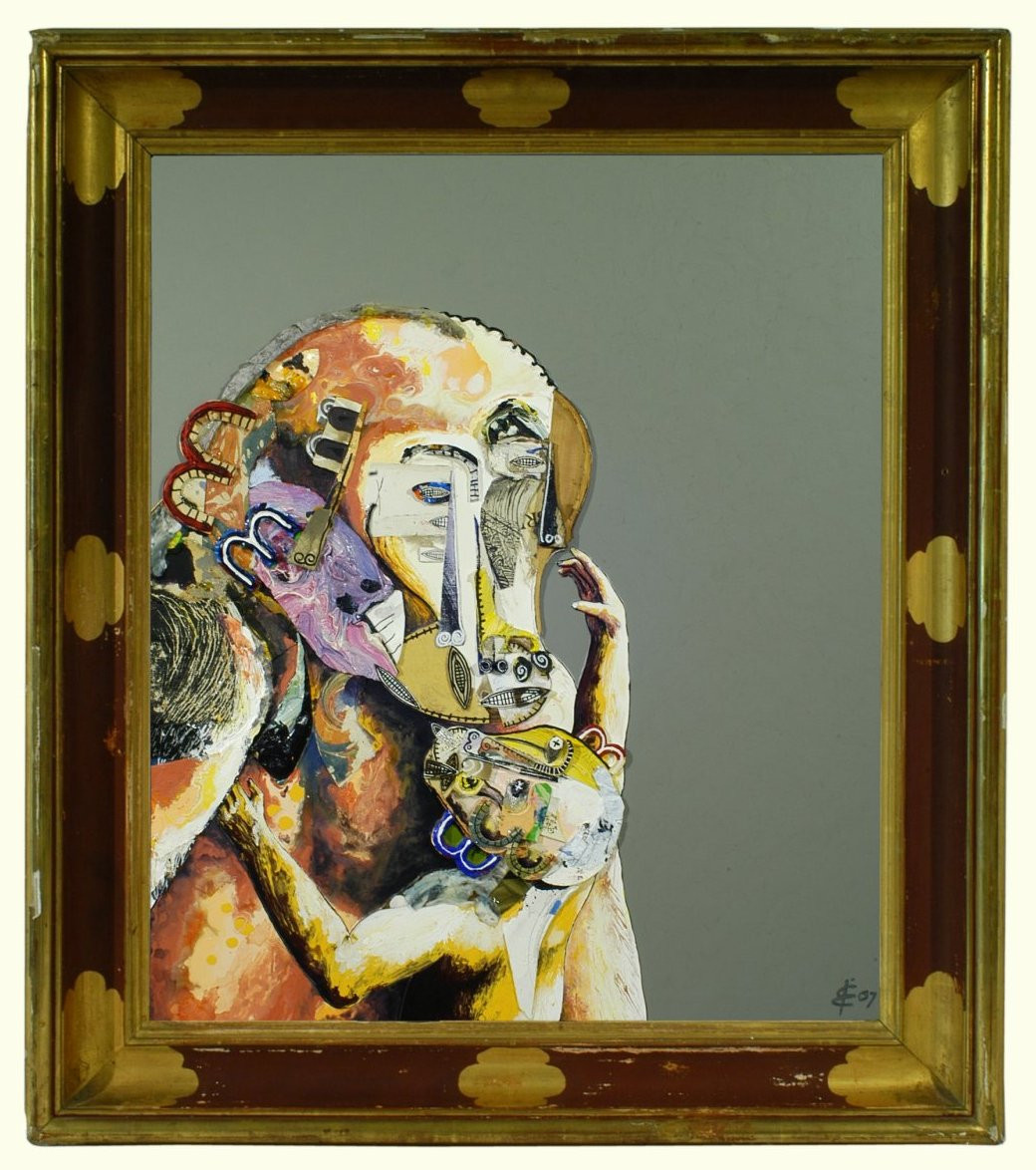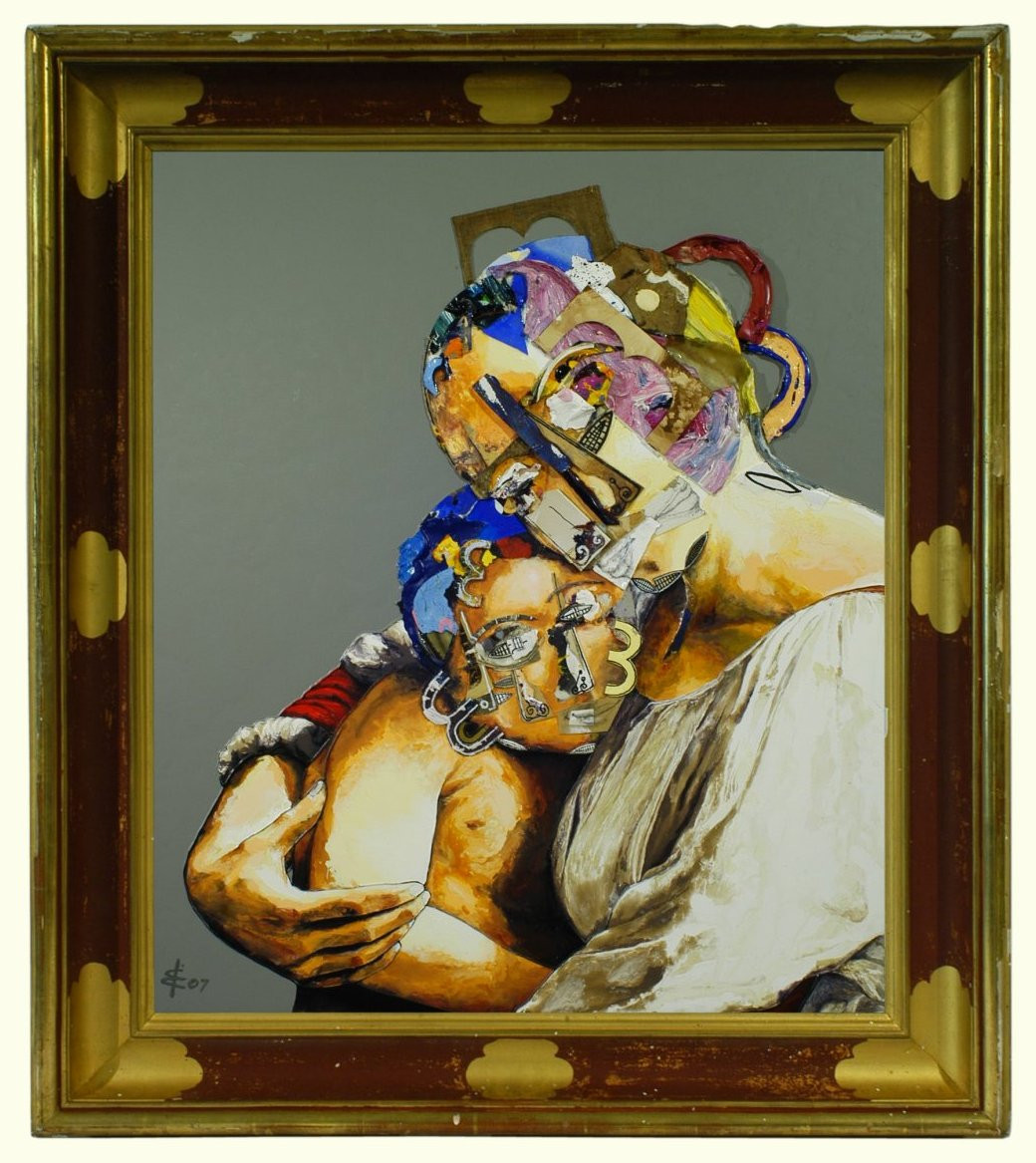Freedom in restraint
- Inspired by the work of Léon Bonnat.
Frame 19th century (design based on the Renaissance), dimensions 74 x 84 cm - Geïnspireerd door het werk van Léon Bonnat.
Lijsten 19e eeuw (vormgeving gebaseerd op de Renaissance) afmeting 74 x 84 cm

![]() The background of the paintings is daring and makes the subject very alive and warm.When choosing the frames, it was important that they show the mortality of life, without losing any beauty.
The background of the paintings is daring and makes the subject very alive and warm.When choosing the frames, it was important that they show the mortality of life, without losing any beauty.
The touch of the mother’s thumb on the skin of the child was essential for me. It is from this that the work derives its title. The way in which the thumb touches the child’s skin reflects the muscle tension of her arm, which is both tensed and relaxed. This tension and relaxation encapsulate both security and freedom. Her fingers lay loosely on the arm, they could easily unfold outwards, there is no restraint in it. The child could move away if need be. Affection and vulnerability are in the pose.
What fascinates me with the mother is that her eyes are not literally present and yet are still so visible and important in her features, her face.
With the monkey and her offspring, I have expressed the theme completely differently. There it was very important that the mother should exude inner serenity. She seems almost emotionless, deep in thought, but the opposite is true. That gives her offspring freedom. The security here is far more in what is not visible but can be sensed. That creates curiosity in her young because it feels the freedom and the security. There is security in the muscle tension in the shoulders and the pose of the arms, also directed at the outside world.

![]() De achtergrond van de schilderijen is gewaagd en maakt het onderwerp juist heel levend en warm.
De achtergrond van de schilderijen is gewaagd en maakt het onderwerp juist heel levend en warm.
Bij de keuze van de lijsten was het belangrijk dat de lijsten de vergankelijkheid van het leven laten zien zonder de schoonheid te verliezen”
De aanraking van de duim van de moeder op de huid van het kind, dat was voor mij essentieel. Daaraan ontleent het werk zijn titel.
De manier waarop de duim de huid van het kind aanraakt, geeft de spierspanning van haar arm weer waarin spanning en ontspanning zit.
In die spanning en ontspanning is de geborgenheid en de vrijheid gevat.
Haar vingers liggen los op de arm, die kunnen zo openvouwen naar buiten toe, daar zit geen geslotenheid in.
Het kind kan er zo uitstappen als het daar behoefte aan heeft.
Genegenheid en kwetsbaarheid liggen in de houding.
Wat mij fascineert aan de moeder is dat de ogen van haar niet letterlijk echt aanwezig zijn en toch zo zichtbaar en belangrijk zijn in haar gelaat, haar gezicht.
Bij de apin en haar jong heb ik het thema heel anders weergegeven.
Daar was het voor mij belangrijk dat de moeder innerlijke rust uitstraalt.
Ze lijkt haast schijnbaar emotieloos in gedachten verzonken maar het tegendeel is waar. Dat geeft het jong juist vrijheid.
De gebondenheid zit hier veel meer in wat niet zichtbaar is maar wel voelbaar.
Dat creëert nieuwsgierigheid bij het jong omdat het de vrijheid en de geborgenheid voelt.
In de spierspanning van de schouders en de houding van de armen zit bescherming, ook naar buiten gericht.


